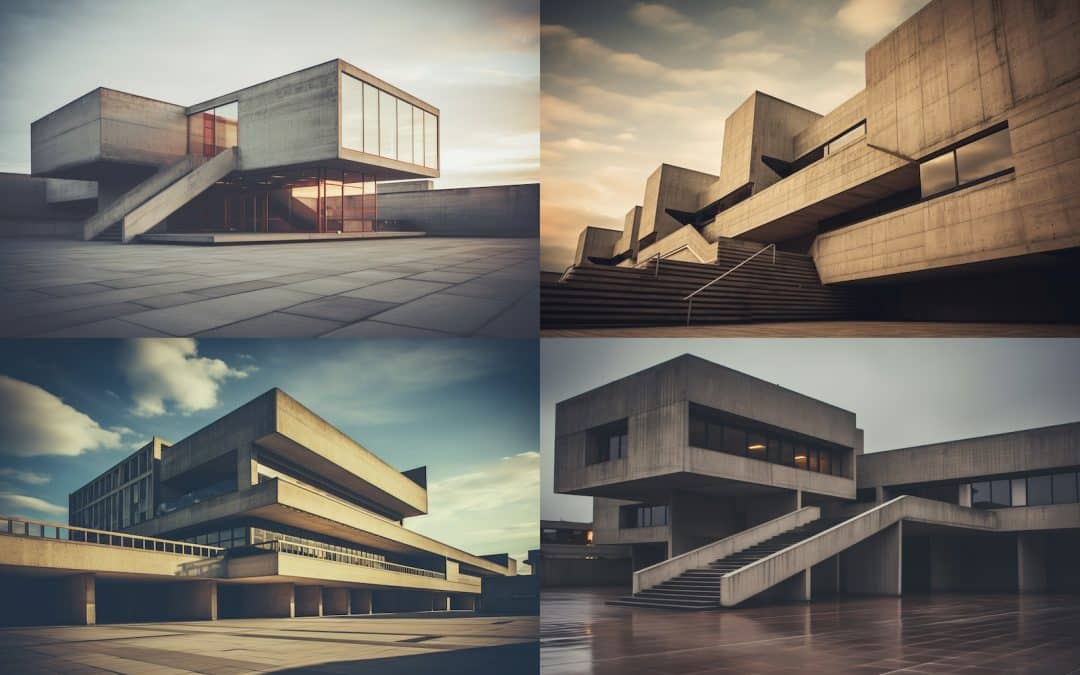Brutalist style architecture is a distinct architectural movement characterized by raw, exposed concrete surfaces, bold geometric forms, and a focus on functionality. The term “brutalism” originates from the French word “béton brut,” which means “raw concrete.” This style emerged in the mid-20th century and gained popularity in the 1950s to the 1970s.
Brutalist buildings often exhibit a sense of massiveness and monumentality, with an emphasis on heavy, solid structures. They typically feature repetitive patterns, angular shapes, and a lack of decorative elements. The rough texture and unfinished appearance of exposed concrete are central to this architectural style, highlighting its industrial and utilitarian nature.
One of the key principles of brutalism is the expression of a building’s structural elements, such as beams, columns, and staircases, which are often left visible and celebrated as architectural features. This honesty in materials and construction techniques gives brutalist buildings a sense of authenticity and truth to their design.
Functionality and social purpose are important aspects of brutalist architecture. Many brutalist structures were designed for public and institutional use, such as government buildings, universities, and housing complexes. The design often prioritizes functionality and efficiency, creating spaces that serve their intended purposes effectively.
While brutalism has faced criticism for its imposing aesthetic and association with urban decay, the style has also been praised for its boldness, sculptural qualities, and the way it engages with its surroundings. Today, brutalist buildings continue to evoke strong reactions and are recognised as significant architectural landmarks of the 20th century.
The vanilla prompt looks like: brutalist futuristic towering villain headquarter building, blade runner 2099 movie still, cinematic, kodak portra 800 –ar 2:3 –style raw

As we explore the below architects we will add
Le Corbusier
Known for his influential work in modernist architecture, Le Corbusier designed iconic brutalist buildings such as Unité d’Habitation in Marseille, France, and the National Museum of Western Art in Tokyo, Japan.
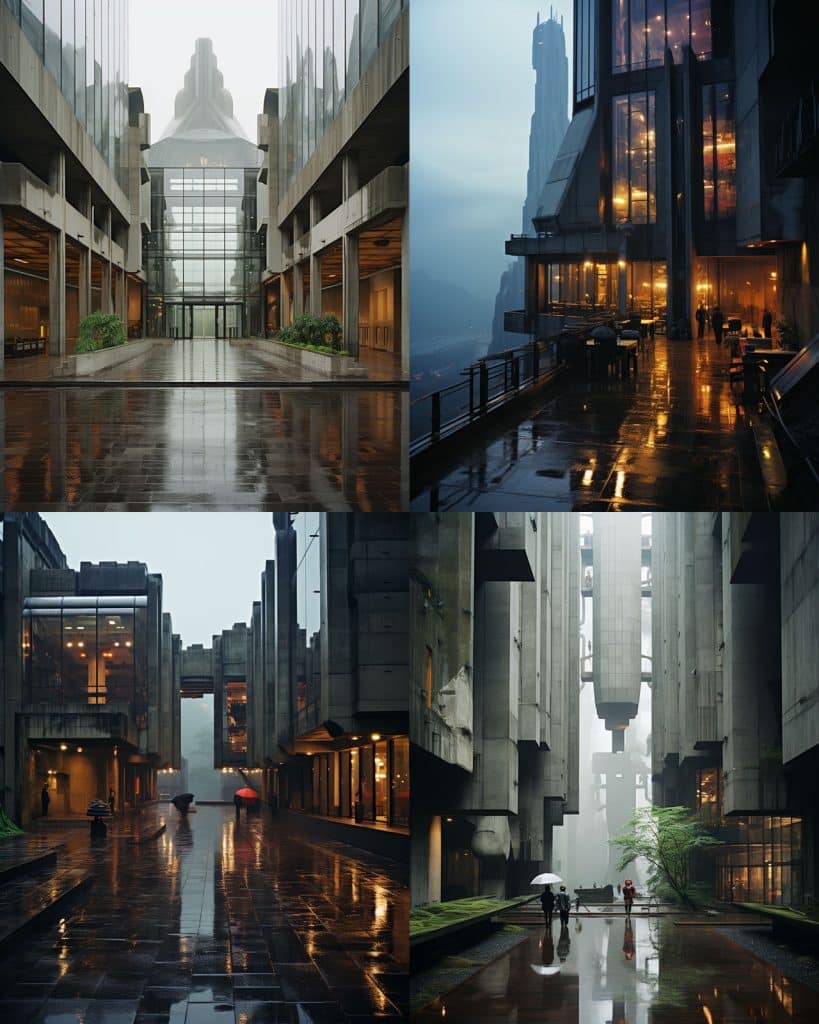
Paul Rudolph
Rudolph’s notable brutalist works include the Yale Art and Architecture Building in New Haven, Connecticut, and the Government Service Center in Boston, Massachusetts.
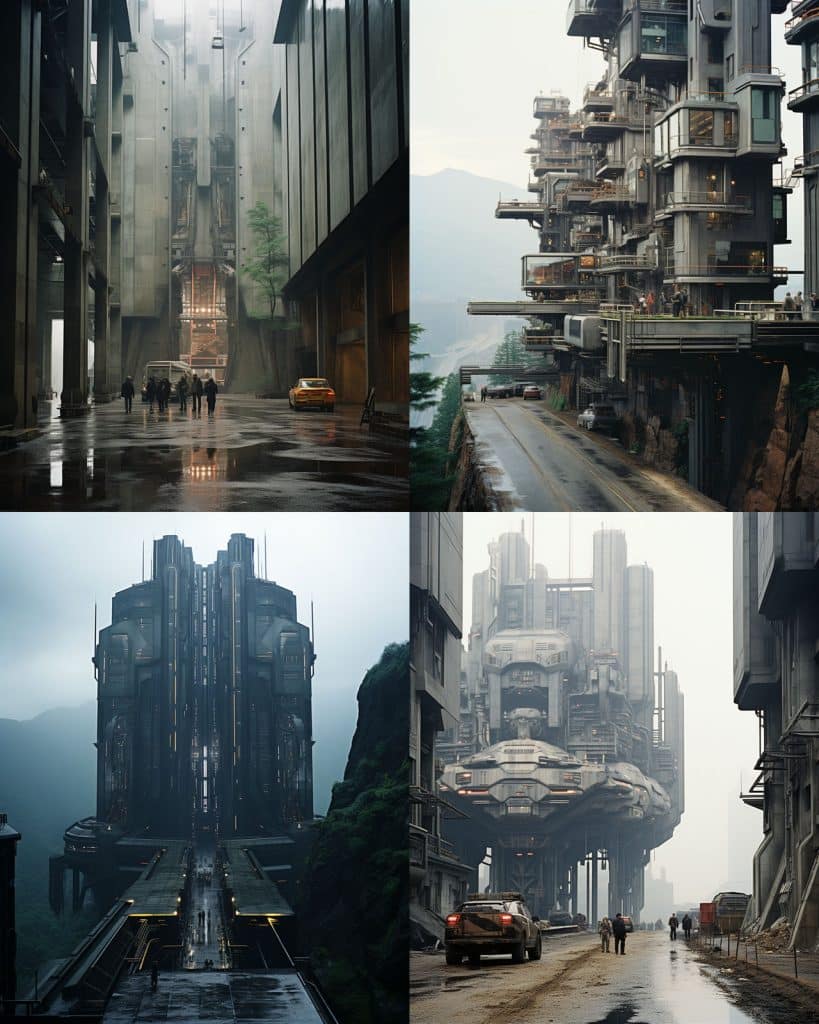
Alison and Peter Smithson
This British architectural duo designed the Robin Hood Gardens in London, which exemplifies the principles of brutalist architecture.

Marcel Breuer
Breuer, a Hungarian-born architect, designed notable brutalist buildings such as the Whitney Museum of American Art in New York City and the UNESCO Headquarters in Paris, France.
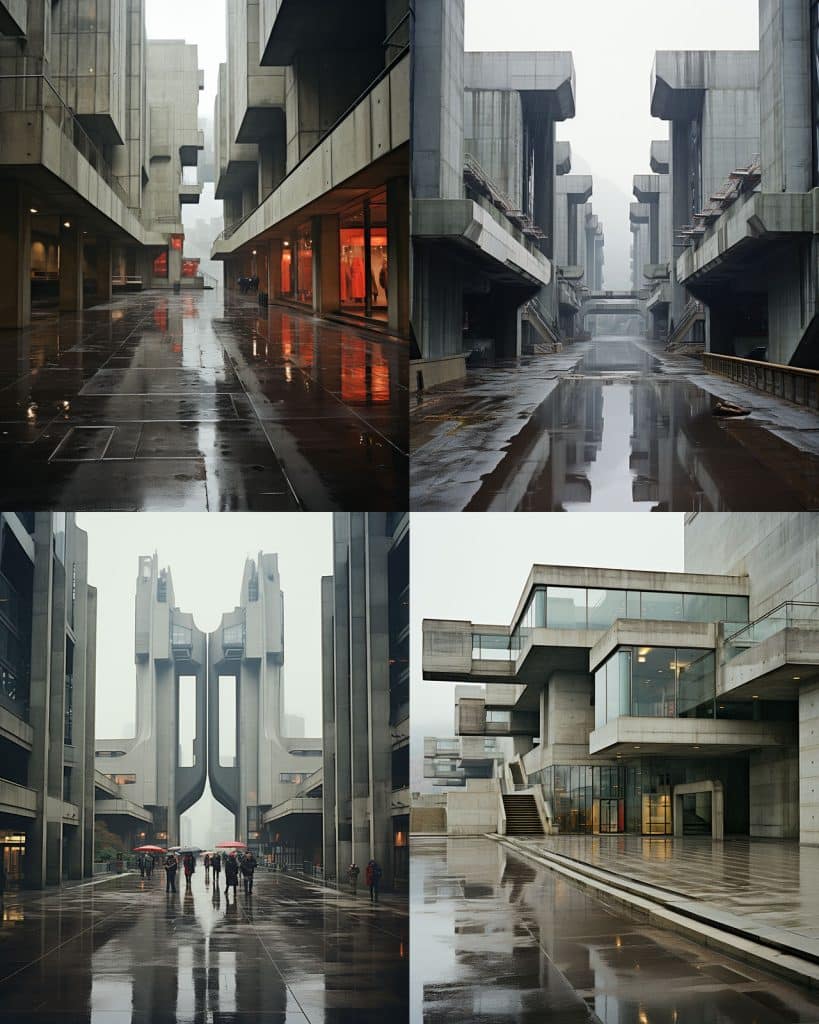
Louis Kahn
Known for his monumental and expressive style, Kahn’s works include the Salk Institute for Biological Studies in La Jolla, California, and the National Assembly Building in Dhaka, Bangladesh.
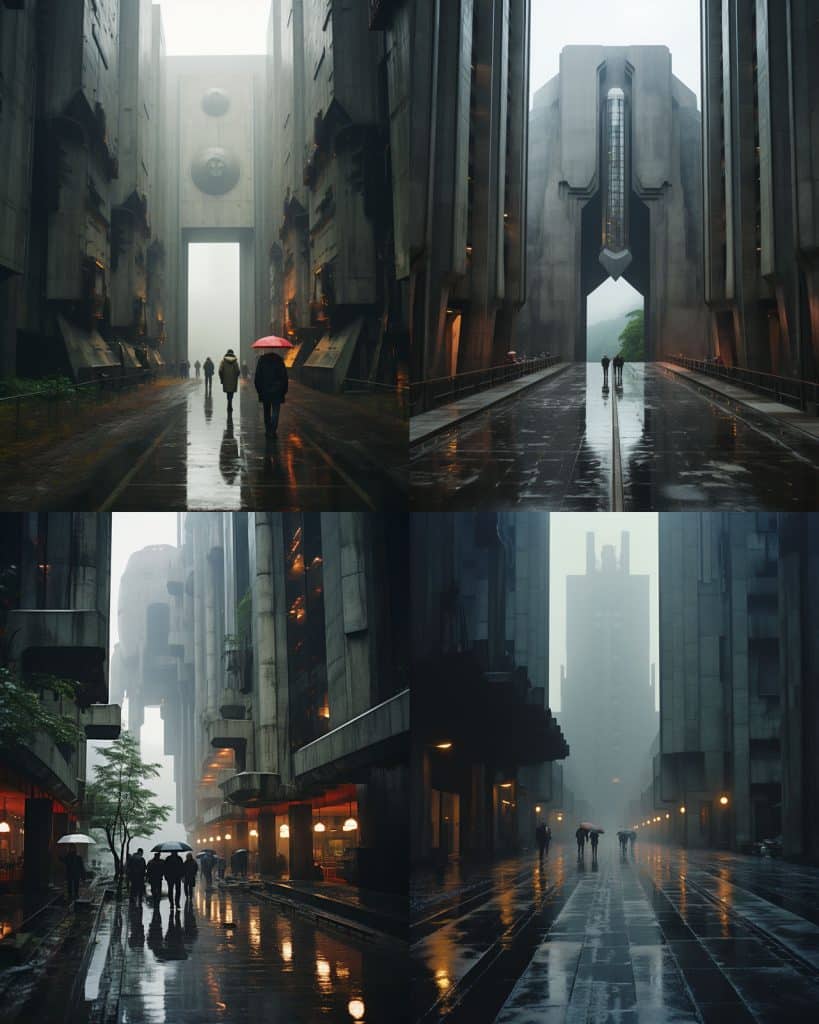
Ernő Goldfinger
Goldfinger’s notable brutalist designs include the Trellick Tower and the Balfron Tower, both residential buildings in London, United Kingdom.
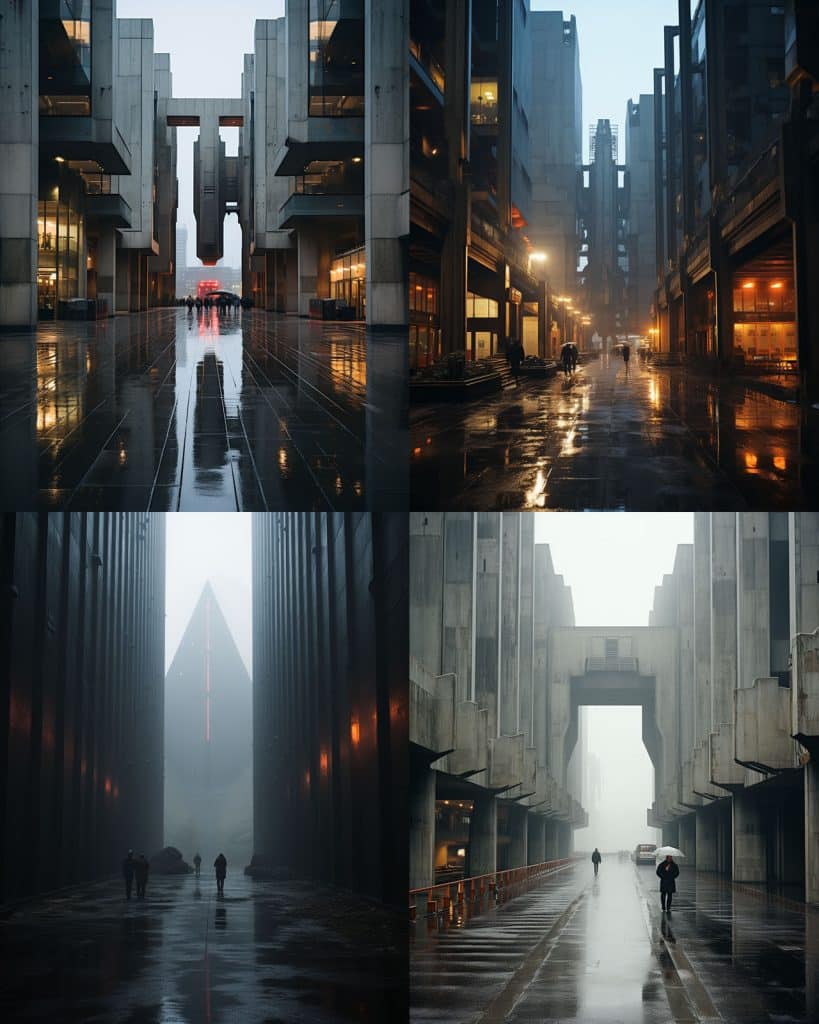
Denys Lasdun
Lasdun designed the National Theatre in London, a prominent example of brutalist architecture known for its iconic concrete form.
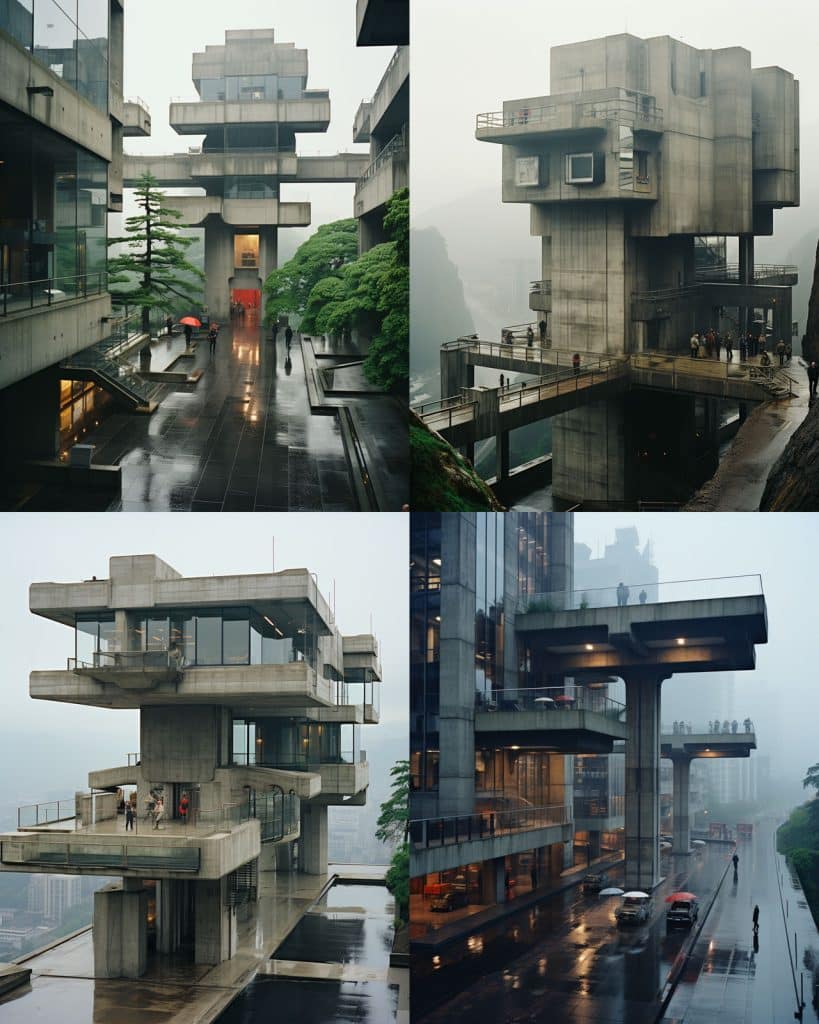
Jørn Utzon
Utzon, known for his design of the Sydney Opera House, also created other notable brutalist structures such as the Bagsværd Church in Denmark.

Gordon Bunshaft
Bunshaft’s significant brutalist work includes the Hirshhorn Museum and Sculpture Garden in Washington, D.C., and the Lever House in New York City.
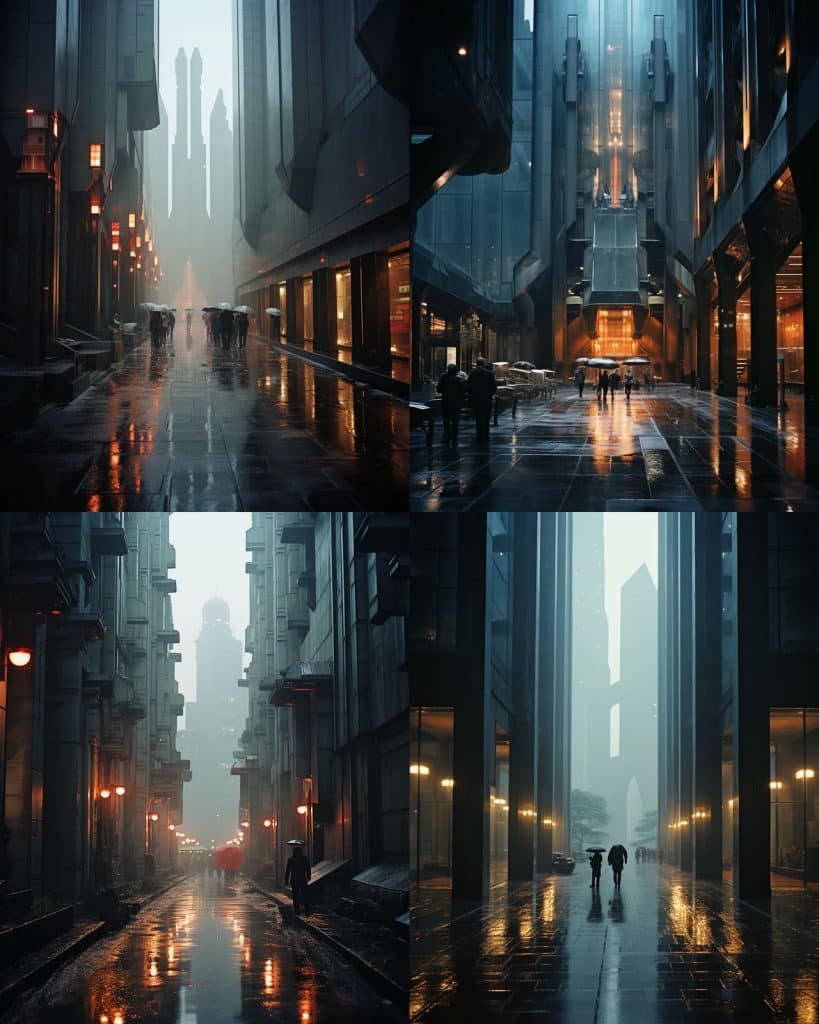
Kenzo Tange
Tange designed several prominent brutalist buildings, including the Yoyogi National Gymnasium in Tokyo, Japan, and the Tokyo Metropolitan Government Building.

These architects have made significant contributions to the brutalist style of architecture, leaving behind iconic buildings that showcase the raw and expressive nature of this architectural movement.
If you'd like to support our site please consider buying us a Ko-fi, grab a product or subscribe. Need a faster GPU, get access to fastest GPUs for less than $1 per hour with RunPod.io

